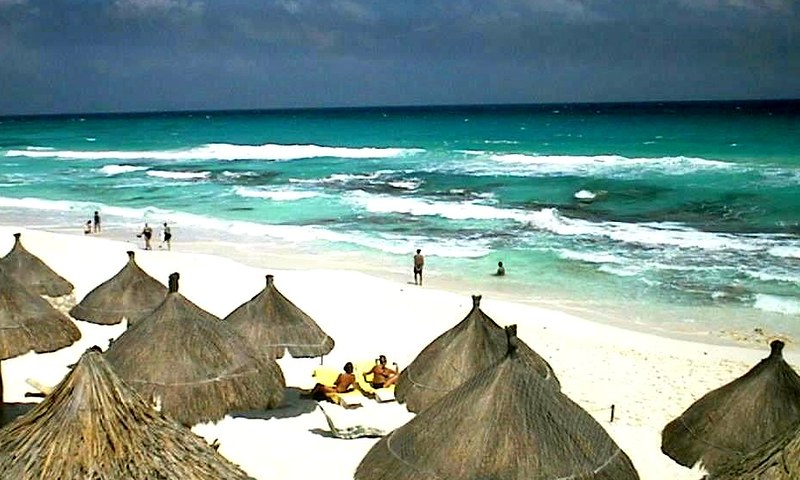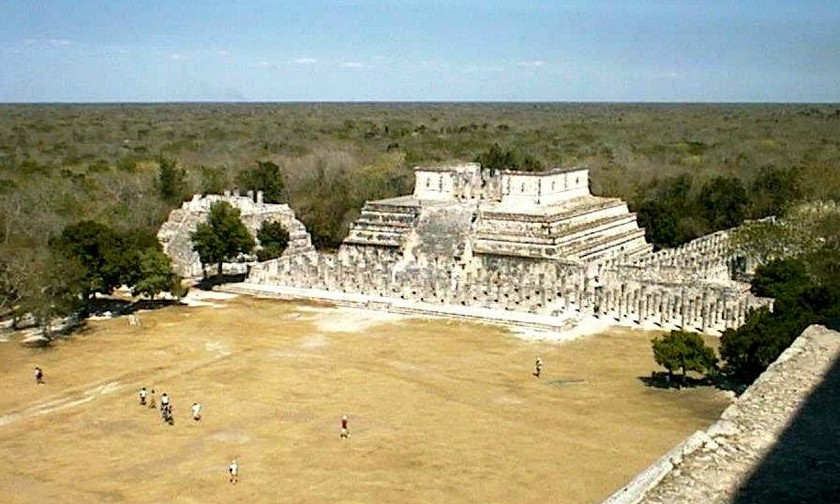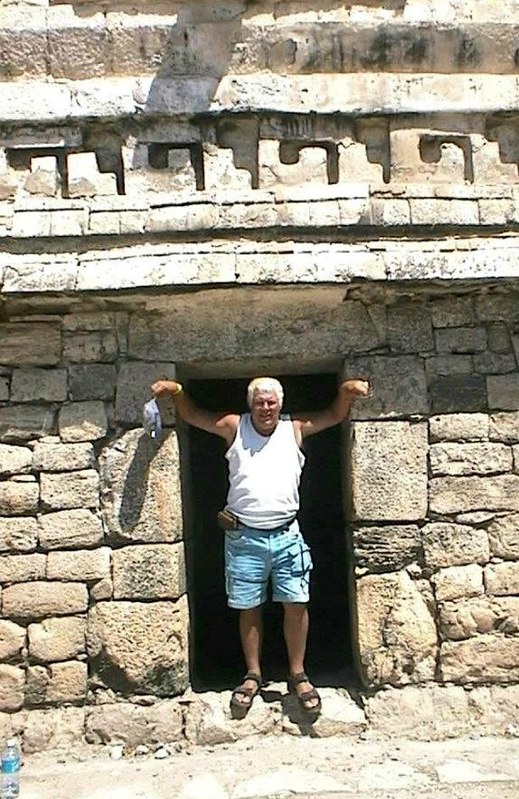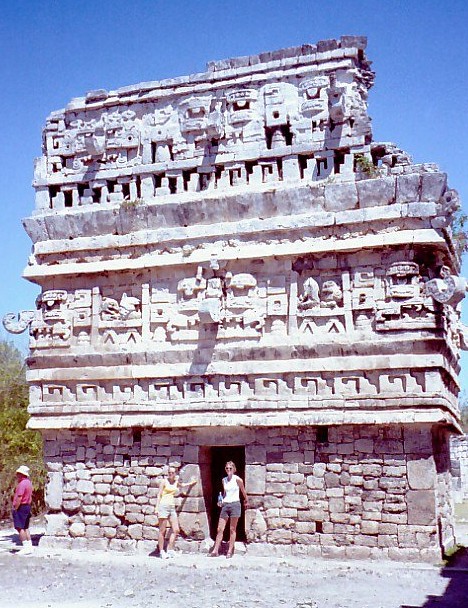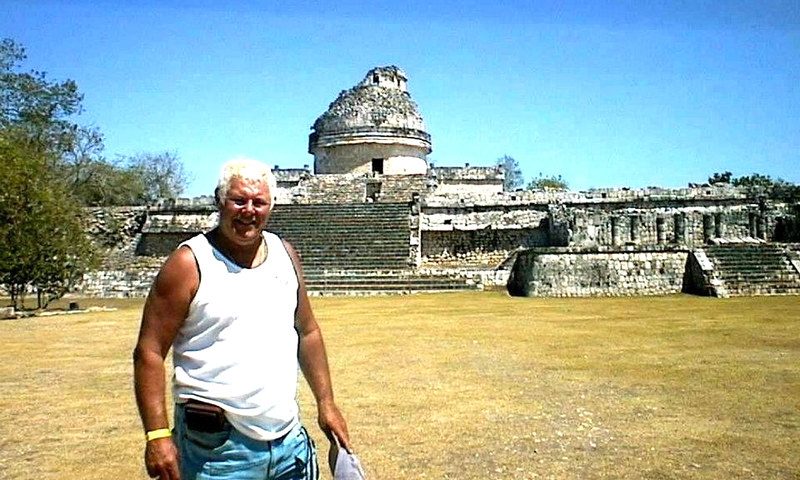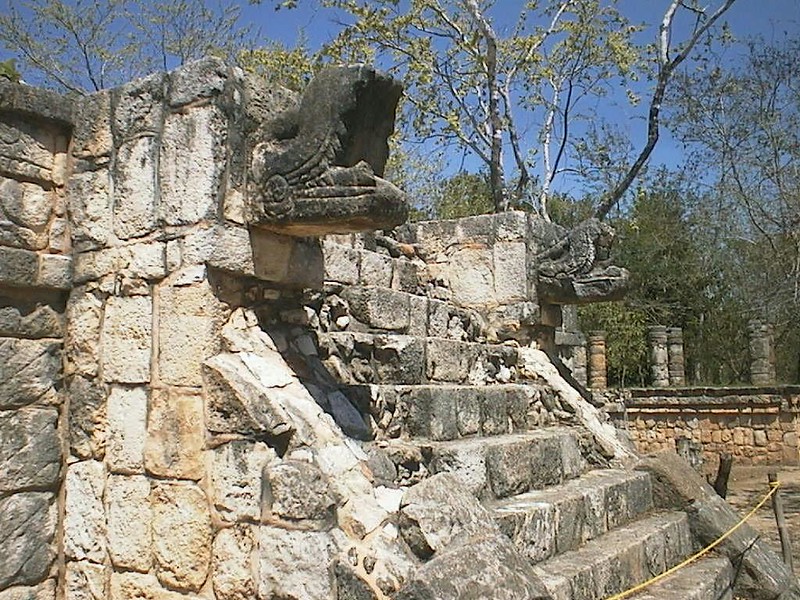Cancun Chichen Itza Mexico
September 30, 2013 by David Herd
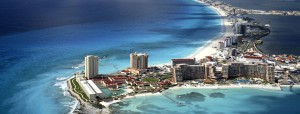
A bucket of Corona
Cancun Chichen Itza Mexico
Cancun Chichen Itza Mexico, it was April 2001 when I travelled there on the way to Cuba. Consequently the photo quality is not up to standard given the fact digital cameras were reasonably new. Cancun reminded me a little of Vegas by the sea with all the fabulous upmarket hotels stretching along the narrow peninsular.
Many luxury hotels in Cancun.
The choice of luxury hotels is endless, they overlook the Caribbean which has the most beautiful colored water that I have ever seen anywhere in the world.
Cancun really has the “WOW FACTOR”.
Soak up the sun & drink Margaritas & Coronas. 🙂
Perfect combination.
A perfect combination, two lovely Japanese girls and a cold Corona. Follow @David_Herd
The beautiful Caribbean at Cancun Chichen Itza Mexico
The water is such a beautiful colour.
El Castillo at Chichen Itza.
I gathered all my courage and made the climb, although when I got to the top I looked down & thought “what an idiot I am to climb this”. I must admit the view was breathtaking, I came down sideways looking at the steps not the ground, and found out later about 15 people a year fall to their death.
Dominating the North Platform of Chichen Itza is the Temple of Kukulkan (a Maya feathered serpent deity similar to the Aztec Quetzalcoatl), usually referred to as El Castillo (“the castle”). This step pyramid stands about 30 metres (98 ft) high and consists of a series of nine square terraces, each approximately 2.57 metres (8.4 ft) high, with a 6-metre (20 ft) high temple upon the summit. The sides of the pyramid are approximately 55.3 metres (181 ft) at the base and rise at an angle of 53°, although that varies slightly for each side. The four faces of the pyramid have protruding stairways that rise at an angle of 45°. The talud walls of each terrace slant at an angle of between 72° and 74°. At the base of the balustrades of the northeastern staircase are carved heads of a serpent.
Mesoamerican cultures periodically superimposed larger structures over older ones, and El Castillo is one such example. In the mid-1930s, the Mexican government sponsored an excavation of El Castillo. After several false starts, they discovered a staircase under the north side of the pyramid. By digging from the top, they found another temple buried below the current one. Inside the temple chamber was a Chac Mool statue and a throne in the shape of Jaguar, painted red and with spots made of inlaid jade. The Mexican government excavated a tunnel from the base of the north staircase, up the earlier pyramid’s stairway to the hidden temple, and opened it to tourists. In 2006, INAH closed the throne room to the public.
On the Spring and Autumn equinoxes, in the late afternoon, the northwest corner of the pyramid casts a series of triangular shadows against the western balustrade on the north side that evokes the appearance of a serpent wriggling down the staircase, which some scholars have suggested is a representation of the feathered-serpent god Kukulkan. (From Wikipedia)
In 2007, Chichen Itza’s El Castillo was named one of the New Seven Wonders of the World after a worldwide vote. Despite the fact that the vote was sponsored by a commercial enterprise, and that its methodology was criticized, the vote was embraced by government and tourism officials in Mexico who project that as a result of the publicity the number of tourists expected to visit Chichen will double by 2012.
From the top of El Castillo you look down at Templo de los Guerreros (Temple of the Warriors)
The Temple of the Warriors complex consists of a large stepped pyramid fronted and flanked by rows of carved columns depicting warriors. This complex is analogous to Temple B at the Toltec capital of Tula, and indicates some form of cultural contact between the two regions. The one at Chichen Itza, however, was constructed on a larger scale. At the top of the stairway on the pyramid’s summit (and leading towards the entrance of the pyramid’s temple) is a Chac Mool. This temple encases or entombs a former structure called The Temple of the Chac Mool. The archeological expedition and restoration of this building was done by the Carnegie Institute of Washington from 1925 to 1928. A key member of this restoration was Earl H. Morris who published the work from this expedition in two volumes entitled Temple of the Warriors. (From Wikipedia)
“La Iglesia” in the Las Monjas complex.
Las Monjas is one of the more notable structures at Chichen Itza. It is a complex of Terminal Classic buildings constructed in the Puuc architectural style. The Spanish named this complex Las Monjas (“The Nuns” or “The Nunnery”) but it was actually a governmental palace.
Cancun Chichen Itza Mexico “La Iglesia”
The Las Monjas group is distinguished by its concentration of hieroglyphic texts dating to the Late to Terminal Classic. These texts frequently mention a ruler by the name of Kakupakal. (From Wikipedia)
“El Caracol” observatory temple.
El Caracol (“The Snail”) is located to the north of Las Monjas. It is a round building on a large square platform. It gets its name from the stone spiral staircase inside. The structure, with its unusual placement on the platform and its round shape (the others are rectangular, in keeping with Maya practice), is theorized to have been a proto-observatory with doors and windows aligned to astronomical events, specifically around the path of Venus as it traverses the heavens.
Akab Dzib is located to the east of the Caracol. The name means, in Yucatec Mayan, “Dark Writing”; “dark” in the sense of “mysterious”. An earlier name of the building, according to a translation of glyphs in the Casa Colorada, is Wa(k)wak Puh Ak Na, “the flat house with the excessive number of chambers,” and it was the home of the administrator of Chichén Itzá, kokom Yahawal Cho’ K’ak’. INAH completed a restoration of the building in 2007. It is relatively short, only 6 metres (20 ft) high, and is 50 metres (160 ft) in length and 15 metres (49 ft) wide. The long, western-facing façade has seven doorways. The eastern façade has only four doorways, broken by a large staircase that leads to the roof. This apparently was the front of the structure, and looks out over what is today a steep, but dry, cenote.
I look back on Cancun & Chichen Itza Mexico and realize how surprised I was with these two places. I had very low expectations yet I was thrilled with what I saw.
El Caracol (“The Snail”)
The southern end of the building has one entrance. The door opens into a small chamber and on the opposite wall is another doorway, above which on the lintel are intricately carved glyphs—the “mysterious” or “obscure” writing that gives the building its name today. Under the lintel in the door jamb is another carved panel of a seated figure surrounded by more glyphs. Inside one of the chambers, near the ceiling, is a painted hand print. (From Wikipedia)
More ruins
This ancient site is fascinating.
Thanks for visiting my Cancun Chichen Itza Mexico photo blog.
Holiday Inn
Fabulous views, excellent restaurants & a very good room rate if you book through THIS LINK.
The building in the middle is the Holiday Inn, on the left is the Amari Hotel which is another very good five star hotel. Use THIS LINK to book for a very good room rate.
Sabai Wing North Pattaya
The best Pattaya budget hotel, 3 pools & opposite Central Marina shopping mall. For a great room rate just book through THIS LINK.
Sutus Court is a great budget hotel right i the heart of one of Pattaya’s main bar areas, just use THIS LINK for a terrific room rate. 420/100 Moo 9 Soi Buakhao.
Pattaya Hilton
This is the view from Horizons the amazing rooftop bar. A great five star hotel located opposte the beach & above the Central Festival shopping mall. Just book through THIS LINK for an excellent room rate.
Book through AGODA for great hotel deals in Cancun. If Cancun is not for you then try Miami.
Counter only started June 16 2020.
This gallery contains 2 photos




